|
Tasting Room Location:
3-2087 Kaumualii Hwy, Lihue, HI 96766 Store Hours/ Tasting Hours MON- 10:00AM-5:00PM/ 10:30AM-4:00PM TUE- 10:00AM-9:00PM/ 10:30AM-7:30PM WED- 10:00AM-5:00PM/ 10:30AM-4:00PM THU- 10:00AM-6:30PM/ 10:30AM-5:30PM FRI - 10:00AM-9:00PM/ 10:30AM-7:30PM SAT - 10:00AM-5:00PM/ 10:30AM-4:00PM SUN - 10:00AM-3:00PM/ 10:30AM-2:00PM (as of 9/1/2019 as follows) |
For nearly a century, Hawaii sugar was king -- a cash crop that supported thousands of families throughout the state. However, globalization caused commodity markets to move international, killing the sugar industry in Hawaii. This effectively left thousands of families without work as there were few other jobs. Greatly impacted was Kōloa, a community of sugarcane workers on the island of Kauai.
Three years after Hawaii’s last sugarcane mill closed its doors, and eighty-nine years since the last large scale sugar production, sugar is making a resurgence. Though progress is slow, there is hope for this once prominent industry through a value-added product: Rum! Kōloa Rum has been at the forefront of this resurgence and seeks to restore some of the sugar industry’s luster. As President and CEO of Kōloa Rum, Bob Gunter, a long time sugar industry veteran puts it: “There was a sad time of plantation closures, but it’s come full circle as a gratifying thread that finds continuance of sugar not for commodity, but rather as locally produced value-added products.”
Hawaii Beverage Guide was able to interview Gunter to learn more about Kōloa Rum.
Three years after Hawaii’s last sugarcane mill closed its doors, and eighty-nine years since the last large scale sugar production, sugar is making a resurgence. Though progress is slow, there is hope for this once prominent industry through a value-added product: Rum! Kōloa Rum has been at the forefront of this resurgence and seeks to restore some of the sugar industry’s luster. As President and CEO of Kōloa Rum, Bob Gunter, a long time sugar industry veteran puts it: “There was a sad time of plantation closures, but it’s come full circle as a gratifying thread that finds continuance of sugar not for commodity, but rather as locally produced value-added products.”
Hawaii Beverage Guide was able to interview Gunter to learn more about Kōloa Rum.
Brand Approach
-
Founding Story
-
Why Rum?
-
Hawaii's Influence on Rum
<
>
Founding Story
Kōloa Rum is a purposeful evolution of Kauai’s sugar industry. The story of the company starts with Bob who has extensively worked in the sugar industry at both Lihue and Kekaha Plantations, and called Kauai home for most of his adult life. As those companies gradually went to the wayside, he naturally gravitated to other businesses, including Kauai Island Utility Cooperative (another offshoot of the sugar industry). Recruitment by a joint venture group based out of Kentucky and California brought him into the rum industry, as they wanted to build a rum distillery. Having had experience in the sugar business and knowing the lay of the land, he was tapped to serve as the director of operations overseeing the design, construction, and commissioning of two different distilleries on Maui, both of which are operational today.
That served as Gunter’s introduction to distilling over the course of five or six years where he gained a lot of experience, knowledge, and made a lot of contacts in the spirits industry that he later brought over to Kauai. During the process of relinquishing the Maui operations, he began to reach out to his Kauai contacts to pitch the idea of a rum distillery and was met with great interest. Essentially, a group of four or five local Kauai investors put up the capital for Gunter to share his collected and gained experience.
The Koloa project earnestly began in 2007. Bob commuted back and forth between Maui and Kauai for a few years before finally moving back to Kauai. In 2008, he began the licensing, permitting, design, and build out of Koloa Rum. By September of 2009, Kōloa Rum began bottling. “Our concept in the beginning was to sell from our tasting room and company store which at the time was the first and only distilled spirits tasting room in the state of Hawaii located at Kilohana Plantation on the outskirts of Lihue. Of course it is still operational today, and we receive 200 to 300 unique visitors per day. It’s through that exposure that Koloa Rum has been able to introduce the brand and products to what is now close to a million people according to the data tracked through register transactions.” Says Gunter.
According to Gunter: “To a large extent, this was the tip of the spear for marketing and sales for us because we’ve been able to reach people from all over the world and certainly in North America. That expanded our capacity to distribute to the mainland, Canada, Japan, New Zealand, and so forth. We are now distributed and or sold in 27 states as well as abroad and soon to be Australia.”
Kōloa Rum is a purposeful evolution of Kauai’s sugar industry. The story of the company starts with Bob who has extensively worked in the sugar industry at both Lihue and Kekaha Plantations, and called Kauai home for most of his adult life. As those companies gradually went to the wayside, he naturally gravitated to other businesses, including Kauai Island Utility Cooperative (another offshoot of the sugar industry). Recruitment by a joint venture group based out of Kentucky and California brought him into the rum industry, as they wanted to build a rum distillery. Having had experience in the sugar business and knowing the lay of the land, he was tapped to serve as the director of operations overseeing the design, construction, and commissioning of two different distilleries on Maui, both of which are operational today.
That served as Gunter’s introduction to distilling over the course of five or six years where he gained a lot of experience, knowledge, and made a lot of contacts in the spirits industry that he later brought over to Kauai. During the process of relinquishing the Maui operations, he began to reach out to his Kauai contacts to pitch the idea of a rum distillery and was met with great interest. Essentially, a group of four or five local Kauai investors put up the capital for Gunter to share his collected and gained experience.
The Koloa project earnestly began in 2007. Bob commuted back and forth between Maui and Kauai for a few years before finally moving back to Kauai. In 2008, he began the licensing, permitting, design, and build out of Koloa Rum. By September of 2009, Kōloa Rum began bottling. “Our concept in the beginning was to sell from our tasting room and company store which at the time was the first and only distilled spirits tasting room in the state of Hawaii located at Kilohana Plantation on the outskirts of Lihue. Of course it is still operational today, and we receive 200 to 300 unique visitors per day. It’s through that exposure that Koloa Rum has been able to introduce the brand and products to what is now close to a million people according to the data tracked through register transactions.” Says Gunter.
According to Gunter: “To a large extent, this was the tip of the spear for marketing and sales for us because we’ve been able to reach people from all over the world and certainly in North America. That expanded our capacity to distribute to the mainland, Canada, Japan, New Zealand, and so forth. We are now distributed and or sold in 27 states as well as abroad and soon to be Australia.”
As stated by Gunter: “Early on, before we even started, we decided not to use molasses as a fermentable. Instead, we used cane sugar or cane juice to the extent that we were able to. We’ve stayed with that and we are now incorporating more and more cane juice and in some cases, cane syrup, which we process and produce.” The decision to not use molasses is because it’s a byproduct of sugar, so it lacks sucrose by nature. Sucrose is the element that ferments into alcohol. Bob explained: “Certainly molasses has residual sugars that will ferment. Although molasses has a great unique taste and character, it’s gooey and thick. Our rum tends to be smooth, clean, and polished as opposed to a typical molasses based rum, or an agricole, which tends to be more bold and vegetale. We are also not an agricole, which is rum made from fresh, pressed cane juice.”
Hawaii’s Influence on the Rum
Kōloa Rum as a product is influenced by Hawaii through its utilization of local agriculture and production. The company is made up of people who are either originally from Hawaii or have been here for a long time and are trying to diversify the economy and help preserve local agriculture. To quote Gunter: “It’s about Kōloa as an actual town and district on Kauai, our history and culture; everything we do is about that.
Kōloa Rum as a product is influenced by Hawaii through its utilization of local agriculture and production. The company is made up of people who are either originally from Hawaii or have been here for a long time and are trying to diversify the economy and help preserve local agriculture. To quote Gunter: “It’s about Kōloa as an actual town and district on Kauai, our history and culture; everything we do is about that.
Ingredients
-
Sugarcane
-
Yeast
-
Water/Water Treatment
-
Additional Flavors
<
>
Sugarcane
According to Gunter: “Our rum is unique and distinctly different; the flavor profile and depth of our rum is from not using molasses. The fact is that it’s a byproduct of the sugar making process. It’s been stripped. It’s been cooked and processed, and cooked and processed. All that’s left is a thick, dark mess to deal with, and a mess to dispose of as opposed to starting with cane juice and syrup, which is very clean and benign. It’s very sweet going in, which keeps the fermentation far less pungent.”
“Our primary ingredient is cane sugar originally sourced from Maui and now increasingly grown here on Kauai. Ever so slightly, our flavor profile and aroma have been changing, but it’s been so gradual that I don’t think it’s been noticeable to the consumer. However, we notice it and we believe it to be positive. We’re sensing that the flavor is becoming a little more full and complex; we’re hopeful in thinking that that’s going to continue.”
The sugar used to make Kōloa Rum was originally from Gay & Robinson on Kauai whose last harvest was in December of 2010. Kōloa contracted with them to purchase 60 tons of raw sugar and used that in their Rum until it expired. The distillery then began bringing in sugar from HC&S on Maui. Before the sugar producers closing, Kōloa Rum contracted with them to buy 190 tons of sugar from their last harvest and are currently down to a little less than 100 tons, which Gunter approximates will last another 1.5 to 2 years. Needless to say, they are feverously eager to produce more of their own cane cultivation as mentioned above, as well as continue to procure from farmers and other landowners. Hopefully, by the time the current sugar supply is exhausted, they would have transitioned into using sugarcane grown on Kauai. Gunter adds: “ If it turns out there will be a period of time that we are not able to self-sustain, we will supplement by bringing in sugar from the mainland rather than import sugar.”
As stated by Gunter: “We are purchasing sugarcane as it becomes available from individual growers on the island, and we’d like to involve as many other people in terms of being able to provide sugarcane to us because that’s a way for them to be part of our operation’s success, and it also helps them put to use what would be otherwise unused, valuable agriculture land.” Also, Koloa Rum has planted two cane fields and is in the process of planting more.
According to Gunter: “Our rum is unique and distinctly different; the flavor profile and depth of our rum is from not using molasses. The fact is that it’s a byproduct of the sugar making process. It’s been stripped. It’s been cooked and processed, and cooked and processed. All that’s left is a thick, dark mess to deal with, and a mess to dispose of as opposed to starting with cane juice and syrup, which is very clean and benign. It’s very sweet going in, which keeps the fermentation far less pungent.”
“Our primary ingredient is cane sugar originally sourced from Maui and now increasingly grown here on Kauai. Ever so slightly, our flavor profile and aroma have been changing, but it’s been so gradual that I don’t think it’s been noticeable to the consumer. However, we notice it and we believe it to be positive. We’re sensing that the flavor is becoming a little more full and complex; we’re hopeful in thinking that that’s going to continue.”
The sugar used to make Kōloa Rum was originally from Gay & Robinson on Kauai whose last harvest was in December of 2010. Kōloa contracted with them to purchase 60 tons of raw sugar and used that in their Rum until it expired. The distillery then began bringing in sugar from HC&S on Maui. Before the sugar producers closing, Kōloa Rum contracted with them to buy 190 tons of sugar from their last harvest and are currently down to a little less than 100 tons, which Gunter approximates will last another 1.5 to 2 years. Needless to say, they are feverously eager to produce more of their own cane cultivation as mentioned above, as well as continue to procure from farmers and other landowners. Hopefully, by the time the current sugar supply is exhausted, they would have transitioned into using sugarcane grown on Kauai. Gunter adds: “ If it turns out there will be a period of time that we are not able to self-sustain, we will supplement by bringing in sugar from the mainland rather than import sugar.”
As stated by Gunter: “We are purchasing sugarcane as it becomes available from individual growers on the island, and we’d like to involve as many other people in terms of being able to provide sugarcane to us because that’s a way for them to be part of our operation’s success, and it also helps them put to use what would be otherwise unused, valuable agriculture land.” Also, Koloa Rum has planted two cane fields and is in the process of planting more.
Yeast
“We’ve selected a strain of yeast that was developed originally in Guadalupe for rum making because it’s high-temperature tolerant in the fermentation process, and also it’s high-alcohol tolerance gets more yield.”
“We’ve tried some yeasts that others prefer to use for more rapid or turbo yields because time is money. This is good if you need ethanol as a fuel additive rather than for drinking, but we will just take our time to make sure the distillate that we produce gives us just what we want.”
“We’ve selected a strain of yeast that was developed originally in Guadalupe for rum making because it’s high-temperature tolerant in the fermentation process, and also it’s high-alcohol tolerance gets more yield.”
“We’ve tried some yeasts that others prefer to use for more rapid or turbo yields because time is money. This is good if you need ethanol as a fuel additive rather than for drinking, but we will just take our time to make sure the distillate that we produce gives us just what we want.”
Water/Water Treatment
Aquifer Water with sediment filtration only.
“We are so blessed to have Mt. Waialeale, one of the wettest places on earth. We all know that when we travel, water doesn’t taste the same from place to place. Here, as the water filters directly through the volcanic rock, it picks up volcanic characteristics, tastes, mouthfeel, and mineral content, so we don’t use reverse osmosis or other filtration. We only filter for sediment.”
Aquifer Water with sediment filtration only.
“We are so blessed to have Mt. Waialeale, one of the wettest places on earth. We all know that when we travel, water doesn’t taste the same from place to place. Here, as the water filters directly through the volcanic rock, it picks up volcanic characteristics, tastes, mouthfeel, and mineral content, so we don’t use reverse osmosis or other filtration. We only filter for sediment.”
Additional Flavors
“It’s noteworthy to add that rum producers in the U.S. are allowed by law to add blenders up to 2% by volume of sugar or glycerin without declaring it on the label. Most producers take advantage of this by adding additional sugar into their distilled rum at the time of blending and bottling to mask harsh medicinal burns or to give their product a smoother mouthfeel. We don’t add any of this except when a flavored recipe calls for sugar. We are proud to clearly say that our core rums are not aged. We plan to continue this practice because fresh rums taste the best and allow the unique flavors to pop, and that also makes the rum more mixable and interchangeable. We’ve tried using aged rum in place of fresh rum in our dark or spiced rum, but it changes the flavor profile completely. When it comes to blending and creating these different flavors, it’s the pure, white rum that works best.”
“It’s noteworthy to add that rum producers in the U.S. are allowed by law to add blenders up to 2% by volume of sugar or glycerin without declaring it on the label. Most producers take advantage of this by adding additional sugar into their distilled rum at the time of blending and bottling to mask harsh medicinal burns or to give their product a smoother mouthfeel. We don’t add any of this except when a flavored recipe calls for sugar. We are proud to clearly say that our core rums are not aged. We plan to continue this practice because fresh rums taste the best and allow the unique flavors to pop, and that also makes the rum more mixable and interchangeable. We’ve tried using aged rum in place of fresh rum in our dark or spiced rum, but it changes the flavor profile completely. When it comes to blending and creating these different flavors, it’s the pure, white rum that works best.”
Distillation
-
The Stills
-
Distilling Approach
<
>
Still
“We have two stills, soon to be three: a 550 gallon stripper still with a copper column with seven plates and our finishing still which is a 1210 gallon copper pot still with a copper column, seven plates and a copper condenser.” The copper pot of the stripper still was made for Kōloa by a mainland company to their design specifications, and the columns by another company. The other still comes with a unique history acquired from an aftermarket used-equipment company in Kentucky. The still was built in 1947 by Liberty Copper Smiths for and used by Brown Forman Distilleries to produce what Gunter believes was used for a variety of different products, one of which was gin. This, he noted, was because they found the juniper racks still inside. Brown-Foreman used the still up until the early 2000’s when they decommissioned it and put it up for sale in Louisville, KY.
According to Gunter: “That was around the time that we were looking for one, so we bought it and had it completely refurbished after travelling over for an in-person inspection. We shipped the pieces and parts over to Kauai to have it reassembled for production and operation.” Gunter also notes: “The size and nature of this pot still and the capacity that it gives us, helps to produce a truly unique and different type of rum in terms of flavor and aroma profile. (This reminds me of a classic whiskey cocktail recreated with aged rum substitutions or mezcal in place of scotch).”
“We have two stills, soon to be three: a 550 gallon stripper still with a copper column with seven plates and our finishing still which is a 1210 gallon copper pot still with a copper column, seven plates and a copper condenser.” The copper pot of the stripper still was made for Kōloa by a mainland company to their design specifications, and the columns by another company. The other still comes with a unique history acquired from an aftermarket used-equipment company in Kentucky. The still was built in 1947 by Liberty Copper Smiths for and used by Brown Forman Distilleries to produce what Gunter believes was used for a variety of different products, one of which was gin. This, he noted, was because they found the juniper racks still inside. Brown-Foreman used the still up until the early 2000’s when they decommissioned it and put it up for sale in Louisville, KY.
According to Gunter: “That was around the time that we were looking for one, so we bought it and had it completely refurbished after travelling over for an in-person inspection. We shipped the pieces and parts over to Kauai to have it reassembled for production and operation.” Gunter also notes: “The size and nature of this pot still and the capacity that it gives us, helps to produce a truly unique and different type of rum in terms of flavor and aroma profile. (This reminds me of a classic whiskey cocktail recreated with aged rum substitutions or mezcal in place of scotch).”
“We distill a minimum of two times. We distill the second finishing pass at a higher proof. This is different from other producers; we do this because it gives a style that is both smooth and sippable, yet mixable.” Gunter goes on to state: “When you use continuous distillation or column stills, it’s difficult, if not impossible, to make your cuts --to take your heads and your tails from the distillation. Using pot stills is really the only method of doing that, which is what we do. We discard our heads and tails as undesirable; we do not recycle them. Those who do put the heads and tails cutback into the next batch, do so for more alcohol.”
Production Process
-
Fermentation
-
Finishing
-
Aging
<
>
Fermentation
A slower, mellower fermentation cycle of five to seven days, though in our micro climate in Kalaheo, we’ve had ferments that gone for 16 to 18 days. This is very slow, but also very gentle, which means it produces a smoother, cleaner, and better distill at the end of the day.
A slower, mellower fermentation cycle of five to seven days, though in our micro climate in Kalaheo, we’ve had ferments that gone for 16 to 18 days. This is very slow, but also very gentle, which means it produces a smoother, cleaner, and better distill at the end of the day.
All rum comes off the still clear. To create the different varitials of rum, the following are the finishing processes.
Gold Rum
The addition of caramelized sugar to the white rum tweaks the color and flavor (for a fresh not aged rum) to make the Gold Rum.
Dark Rum
Dark Rum has additional caramelized sugar (and Tahitian vanilla when available).
Spiced Rum
Spiced rum, same process, proprietary blend of spices, 88 proof.
Coconut Rum
All natural coconut rum is bottled at 80 proof and includes highly concentrated coconut compounds; particulates can be seen floating in the bottle with a greenish tinge, which comes from the ingredients used.
Coffee Rum
Coffee rums, the latter of which, is made with locally grown Kauai coffee. Kauai Coffee Company is the largest coffee farm in the U.S. with 3,700 acres. They grow and brew a great coffee.
“We do a cold brew process with a special roast and grind from Kauai Coffee Co. to blend with our rum to which we add a bit of cane sugar for an absolutely delicious coffee liqueur.”
Gold Rum
The addition of caramelized sugar to the white rum tweaks the color and flavor (for a fresh not aged rum) to make the Gold Rum.
Dark Rum
Dark Rum has additional caramelized sugar (and Tahitian vanilla when available).
Spiced Rum
Spiced rum, same process, proprietary blend of spices, 88 proof.
Coconut Rum
All natural coconut rum is bottled at 80 proof and includes highly concentrated coconut compounds; particulates can be seen floating in the bottle with a greenish tinge, which comes from the ingredients used.
Coffee Rum
Coffee rums, the latter of which, is made with locally grown Kauai coffee. Kauai Coffee Company is the largest coffee farm in the U.S. with 3,700 acres. They grow and brew a great coffee.
“We do a cold brew process with a special roast and grind from Kauai Coffee Co. to blend with our rum to which we add a bit of cane sugar for an absolutely delicious coffee liqueur.”
Aging
50 gallon, once-used Bourbon barrels sourced exclusively from Heaven Hill in Kentucky.
Koloa has a humid microclimate that influences angel’s share. Gunter provided additional insight: “Our Kauai Reserve Single-Batch Aged Rum that is aged for a minimum of three years; we began aging the rum with 12 barrels to call it a 12-barrel select. When it becomes time to bottle, the barrels are all drained together as a single batch.”
50 gallon, once-used Bourbon barrels sourced exclusively from Heaven Hill in Kentucky.
Koloa has a humid microclimate that influences angel’s share. Gunter provided additional insight: “Our Kauai Reserve Single-Batch Aged Rum that is aged for a minimum of three years; we began aging the rum with 12 barrels to call it a 12-barrel select. When it becomes time to bottle, the barrels are all drained together as a single batch.”

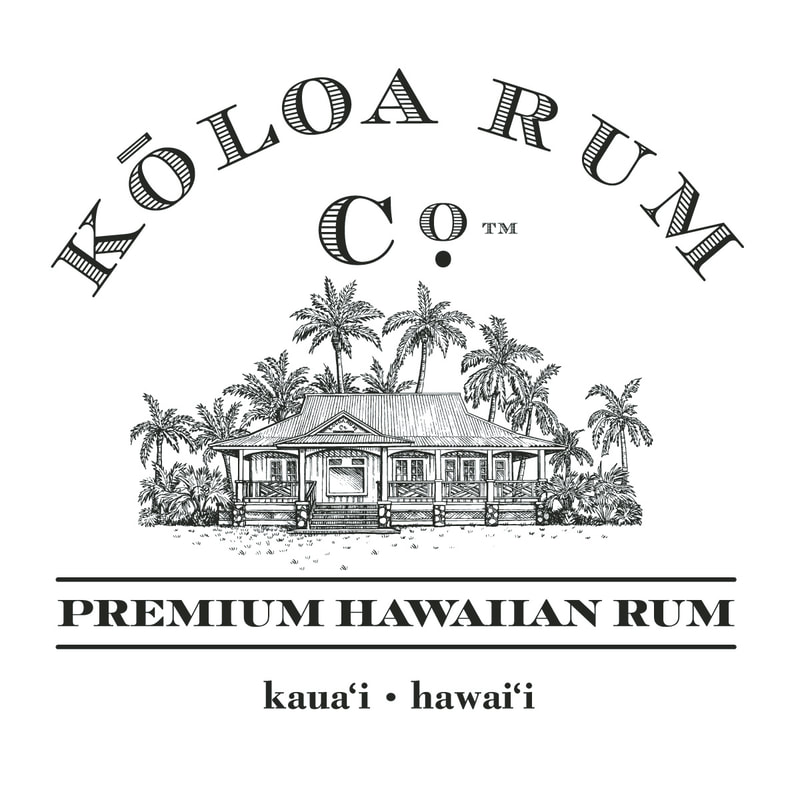
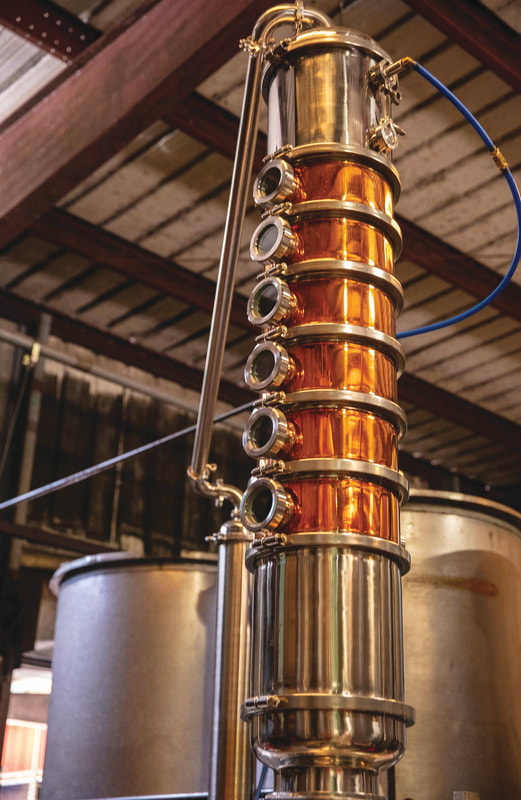
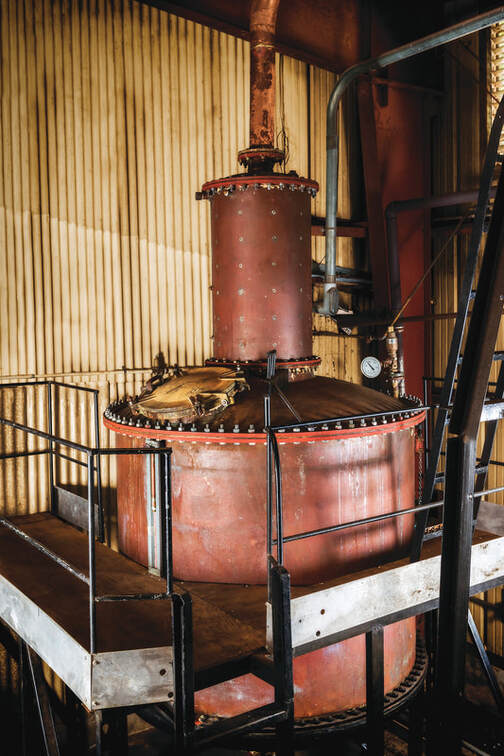
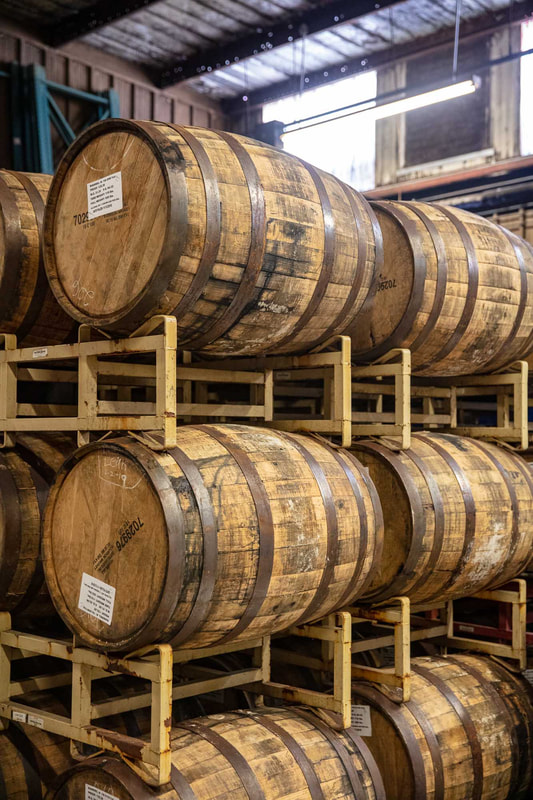
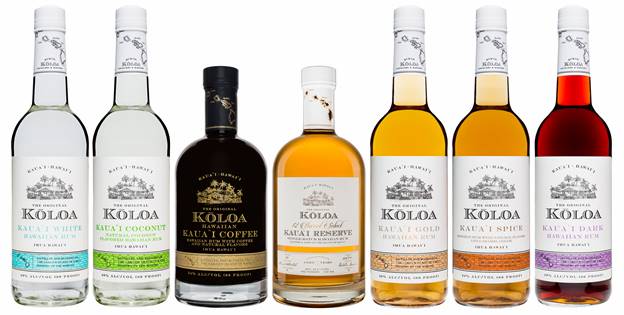
 RSS Feed
RSS Feed